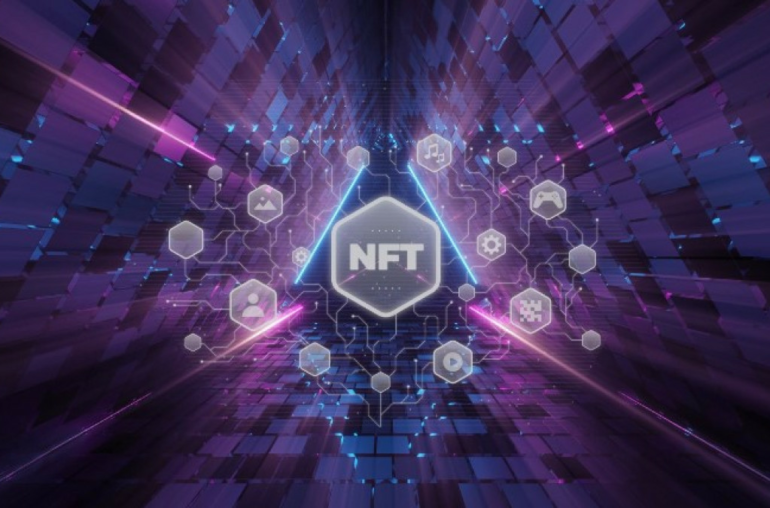We use cookies and other tracking technologies to provide services in line with the preferences you reveal while browsing the Website to show personalize content and targeted ads, analyze site traffic, and understand where our audience is coming from in order to improve your browsing experience on our Website. By continuing to browse this Website, you consent to the use of these cookies. If you wish to object such processing, please read the instructions described in our Cookie Policy / Privacy Policy.
Interested in blogging for timesofindia.com? We will be happy to have you on board as a blogger, if you have the knack for writing. Just drop in a mail at [email protected] with a brief bio and we will get in touch with you.
Asif Kamal, Founder and CEO of Artfi
Non-fungible tokens (NFTs) are considered the next big thing and have taken the world by storm. According to a market tracker DappRadar, the NFTs achieved more than $23 billion in trading volume in 2021. People see NFTs as a method to diversify their holdings, making them a potent trend in digital assets worldwide.
India is well positioned to take the lead in the non-fungible tokens (NFT) market thanks to its expansive scope in this area. NFTs serves as a great example of the innovation that crypto-assets and open-source blockchains may enable, in this case – fine art, the birth of a previously unexplored sector.
Democratization of Fine Art through Blockchain and NFT
NFT and blockchain may sound too techy for someone, but it is solving the problem of most artists in the industry. Due to its democratizing nature, artists are also exploring NFTs over traditional methods of art distribution. The ownership of artwork is transparent and easy to track. It creates a decentralized landscape that democratizes opportunities for artists, connecting them directly to collectors through designated platforms and the NFT marketplaces, giving them a wider reach.
The opportunity to earn royalties and partial sale of the physical paintings never existed in the history of the fine art world. NFTs present artists, sellers, and collectors the opportunity to earn royalties, partially sell their art, keep the remaining locked in their wallets, and redeem them at higher prices in the future. This unique proposition makes NFTs a promising and tradable investment avenue, much like equities and mutual funds.
Understanding Fractionalization of Fine Art
Historically, fine art was confined to the reach of the elite class. The good news is that now anyone can buy and own a part of exclusive artwork, all possible because of the fractionalization of fine art. Instead of just one asset, the fine art gets divided into 5,000 to 10,000 pieces, i.e., numerous predefined coordinates, dividing ownership among the masses.
The fine art sector has adopted this technology to offer small investors access to the world’s largest asset class.
Fractionalization is redefining the ownership mechanism in the 1.7 trillion art and collectibles market. It brings an opportunity to invest in fine art by removing all the barriers that fine art always had, that includes heavy ticket size, long holding period, dependencies on exports, galleries, auction houses, etc.
In the process, high-value artworks are tokenized as NFTs. The smart contract divides the token into a predefined number of interchangeable tokens. These NFTs represent an ownership stake in the underlying physical work of art, and their existence is tied to the physical artwork through legal mechanisms and smart contracts.
While the pairing of blockchain technology and art initially looked strange and unreal, perhaps one can now see how well these two can work together. The art market will undoubtedly continue to change with the adoption of blockchain and the progression in the metaverse space.
Virtual Museums through Metaverse
Implementing blockchain technology in digital assets creates new virtual environments where users can visit the museums through a virtual reality experience. Virtual museums are being developed within a metaverse that contains pictorial works, sculpture works, musical works, and other digital arts.
The British Museum recently launched the NFT collection for the rarest items. Museums might launch virtual galleries in the metaverse that allows visitors to view and buy NFTs, interact with new artworks, virtual live events, and visit NFT stores.
A few years from now, India’s commercial sector for NFTs is anticipated to emerge to its fullest.
The new form of auctions, contemporary artworks, and the easy access to the fractions of precious and rare digital artwork makes this sector growth-oriented. There has been a steady start, and NFTs will grow in the future, with more features like fractionalization of fine art.
{{C_D}}
{{{short}}} {{#more}} {{{long}}}… Read More {{/more}}
Views expressed above are the author’s own.
Don’t deify, don’t demonise: Congress created a Nehru cult but the critique of India’s first PM by today’s right wing is unfair
Congress-Mukt Azad: Final warnings for Grand Old Party
Rein-in the ‘sar tan’ brigade. The future of democracy is at stake.
Your daughter’s rapists have been set free and garlanded
Bilkis case: Those who deserve noose should not be garlanded
What BJP can teach Congress: Political success comes from ideas, not intellectual laziness
Gandhi or not: Congress getting serious about its 2024 game has to begin with electing Sonia’s successor
What BJP learnt from Congress: All parties manipulate community sensibilities for electoral gains, all govts game the Constitution
At 75, India needs to talk: Some of our problems need dialogue, between parties, between communities, between ideologues
A story of private success and public failure: Unless it fixes its institutions, India will not become a developed nation in 25 years
Interested in blogging for timesofindia.com? We will be happy to have you on board as a blogger, if you have the knack for writing. Just drop in a mail at [email protected] with a brief bio and we will get in touch with you.
Mrs Funnybones
Cash Flow
O-zone
Captain’s Musings,TOI Edit Page
Copyright © 2022 Bennett, Coleman & Co. Ltd. All rights reserved. For reprint rights: Times Syndication Service


